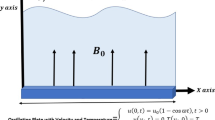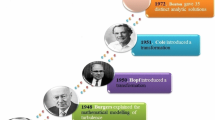Abstract
This paper presents the results of the first-time application of the element-free Galerkin (EFG) method for simulations of groundwater flow with free and moving boundaries. The EFG method does not require any element or grid, therefore it eliminates time-consuming remeshing procedures in modeling of moving boundary problems. The EFG method employs time dependent shape functions based on the moving least square (MLS) approximations. A coupled EFG-FEM technique was used to treat Dirichlet boundary conditions that are difficult in the EFG method. The EFG method was verified by comparing numerical results with analytical solutions for a steady-state seepage problem. In order to demonstrate applicability of the EFG method dealing with flow problems with moving boundaries, a transient free-surface and seepage problem in an unconfined aquifer was simulated. Difficulties associated with modeling a free and moving irregular boundary have been successfully overcome by employing the EFG method.
Similar content being viewed by others
References
Belytschko, T., Lu, Y.Y. and Gu, L., 1994, Element-free Galerkin methods. International Journal for Numerical Methods in Engineering, 37, 229–256.
Belytschko, T., Lu, Y.Y. and Gu, L., 1995, Crack propagation by element-free Galerkin methods. Engineering Fracture Mechanics, 51, 295–315.
Brebbia, C.A. and Dominguez, J., 1992, Boundary Elements: An Introductory Course. McGraw-Hill Book Company, New York, NY.
Bredehoeft, J.D. and Pinder, G.F., 1970, Digital analysis of areal flow in multiaquifer groundwater systems: a quasi three-dimensional model. Water Resources Research, 6, 883–888.
Durbin, T.J. and Berenbrock, C., 1985, Three-dimensional simulation of free-surface aquifers by finite-element method. U.S. Geological Survey Water-Supply Paper, 2270, 51–67.
Freeze, R.A., 1971, Three-dimensional transient, saturated-unsaturated flow in a groundwater basin. Water Resources Research, 7, 347–366.
Frind, E.O. and Verge, M.J., 1978, Three-dimensional modeling of groundwater flow systems. Water Resources Research, 14, 844–856.
Harr, M.E., 1962, Groundwater and Seepage. McGraw-Hill Book Company, New York, NY.
Hoffman, J.D., 1992, Numerical Methods for Engineers and Scientists. McGraw-Hill, NY.
Lancaster, P. and Salkauskas, K., 1981, Surface generated by moving least squares methods. Mathematics of Computation, 37, 141–158.
Lennon, G.P., Liu, P.L.-F. and Liggett, J.A., 1980, Boundary integral solutions to three-dimensional unconfined Darcys flow. Water Resources Research, 16, 651–658.
Liggett, J.A., 1977, Location of free surface in porous media. ASCE, Journal of Hydraulic Division 103, 353–365.
Liu, P.L.-F. and Liggett, J.A., 1978, An efficient numerical method of two-dimensional steady groundwater problems. Water Resources Research, 14, 385–390.
Lu, Y.Y., Belytschko, T. and Gu, L., 1994, A new implementation of the element-free Galerkin method. Computer Methods in Applied Mechanics and Engineering, 113, 397–414.
McDonald, M.G. and Harbaugh, A.W., 1988, A Modular Three-Dimensional Finite-Difference Ground-Water Flow Model. U.S. Geological Survey Techniques of Water-Resources Investigations, Book 6, Chap. A1.
Neuman, S.P. and Witherspoon, P.A., 1970, Variational principles for confined and unconfined flow of ground water. Water Resources Research, 6, 1376–1382.
Neuman, S.P. and Witherspoon, P.A., 1971, Analysis of nonsteady flow with a free surface using the finite element method. Water Resources Research, 7, 611–623.
Organ, D.J., 1996, Numerical Solutions to Dynamic Fracture Problems Using the Element-Free Galerkin Method. Ph.D. thesis, Northwestern University.
Taylor, G.S. and Luthin, J.N., 1969, Computer method for transient analysis of water-table aquifers. Water Resources Research, 5, 144–152.
Wang, H.F. and Anderson, M.P., 1995, Introduction to Groundwater Modeling, Finite Difference and Finite Element Methods. Academic Press, Inc., N.Y.
Author information
Authors and Affiliations
Corresponding author
Rights and permissions
About this article
Cite this article
Park, YC., Leap, D.I. Modeling groundwater flow with a free and moving boundary using the element-free Galerkin (EFG) method. Geosci J 4, 243–249 (2000). https://doi.org/10.1007/BF02910142
Received:
Accepted:
Issue Date:
DOI: https://doi.org/10.1007/BF02910142




